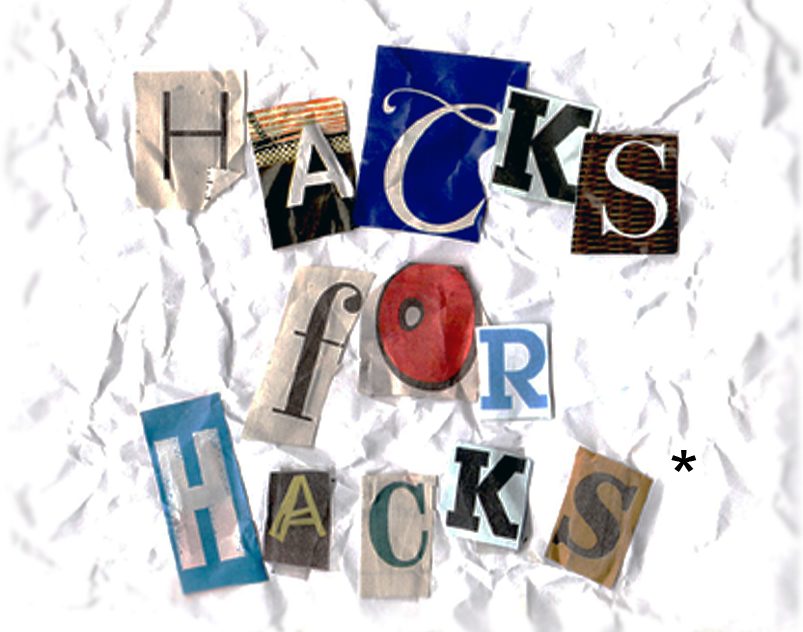Every Hack Needs an Idea File
By Bill Ferris | July 3, 2021 |

*sense of humor required
Warning: Hacks for Hacks tips may have harmful side effects on your writing career, and should not be used by minors, adults, writers, poets, scribes, scriveners, journalists, or anybody.
Writers talk a lot about killing your darlings—those wonderful ideas and sentences that you just love, but you cut them because you can’t make them work in your story. But they’re just so great! Do you really have to cut them? Unfortunately, yes. You can’t spell IDEA without DIE, and there’s no better place for your ideas to perish than in your idea file.
What is an idea file, you ask? Well, it’s pretty self-explanatory, but I’ll explain anyway so you won’t know I’m judging your stupid question: An idea file is a document (or a folder containing documents) in which you store ideas you haven’t yet fleshed out, paragraphs that don’t fit, flourishes that sound great but disrupt the flow of the story, and writing that’s obviously crap but you can’t bring yourself to delete because you have weird attachment issues. (If that last bit sounds judgmental, it is, but take solace that I’m judging myself most harshly of all.)
What I’m saying is you don’t really have to kill your darlings. Simply cut and paste them into a different document! Your idea file will make you a better editor. It’s easier to wield the knife when you know the trimmings can be re-attached any time you like. But if a month goes by and you’ve forgotten about the bits you cut? They probably weren’t necessary in the first place. You’re not killing your darlings, you are simply entombing them forever in a sub-folder on your hard drive, like walling up your best frenemy in your catacombs next to the amontillado.
What to put in your idea file
You can put anything you want in your idea file that you think might come in handy later.
- Ideas (bad)
- Ideas (good)
- Jokes (bad)
- Jokes (slightly less bad)
- Backstory
- Characters that might work in a different book
- Elegant descriptions of nothing in particular
- Plot points that, upon closer inspection, are highly derivative of the 90s sitcom trope where a pregnant woman has to give birth in a stuck hospital elevator
- More backstory
- Some free writing that you did just to meet your word count. It obviously couldn’t go in the story, and you knew it when you were writing it. But didn’t it feel wonderful to just get some words down on paper? To hear the drumbeat of literature as your fingertips beat their steady staccato rhythm onto the keyboard? To feel The Muse tousle your hair and whisper sweet nothings into your ear as pure, unadulterated Language flowed from your mind? Truly, it would have been a shame to let anything like that end up in your manuscript.
Making the most of your idea file
If you’re going to create an idea file, don’t forget the most important step. It’s important to review your idea file occasionally and see if there is anything worth salvaging, like maybe once a decade or so. Unlike the catacombs in the “Cask of Amontillado” metaphor I used earlier, you won’t have to break through an edifice of shabbily assembled masonry to view your exiled darlings—though the dreck you find there may be more horrifying than your erstwhile foe’s remains. For most of what you find, it will be obvious why you cut it in the first place. You may even uncover hidden gems that will work for other projects. A lot of the ideas you find, however, are clearly being punished for their wickedness; better that they survive as a warning, lest you be tempted to commit similar literary sins later on.
Do you use an idea file? How is it working out for you? Share your ideas in the comments!
[coffee]










Love this post. Especially since I’m a firm believer in NEVER killing your darlings. You don’t have to use them, but for goodness sake, file them away. You may use a word or two later, or even a sentence from a paragraph you’ve deleted. Or keep them just for yourself. After all, they’re called “darlings” for a reason.
Better watch out, Mr. Ferris; you accidentally put some good ideas in there.
The only good use for an idea file is to file all the darlings down to skeletal nubs.
Thank goodness for backed up digital files. And computers that can find a bit by searching on ‘alyrs’. Because I know I’m going to use that bit somewhere, some how, some day – and I need to be able to find it, when the WIP will be 500K when finished, and I typically have 10-1000 extra words in files for each word in the final version.
It used to take pages and pages in notebooks, and boxes full of those notebooks, and now it’s at my fingertips. My Scrivener projects are massive – I had to split the current one because I had 60MB of my own text in it.
I’m picky about the final product – most of that other stuff won’t ever see the light. But I loved it once.
Thanks, Bill. I have done this. Now I need instructions on how to FIND what I saved, LOL.
Rule for Beth: don’t love ALL your darlings.